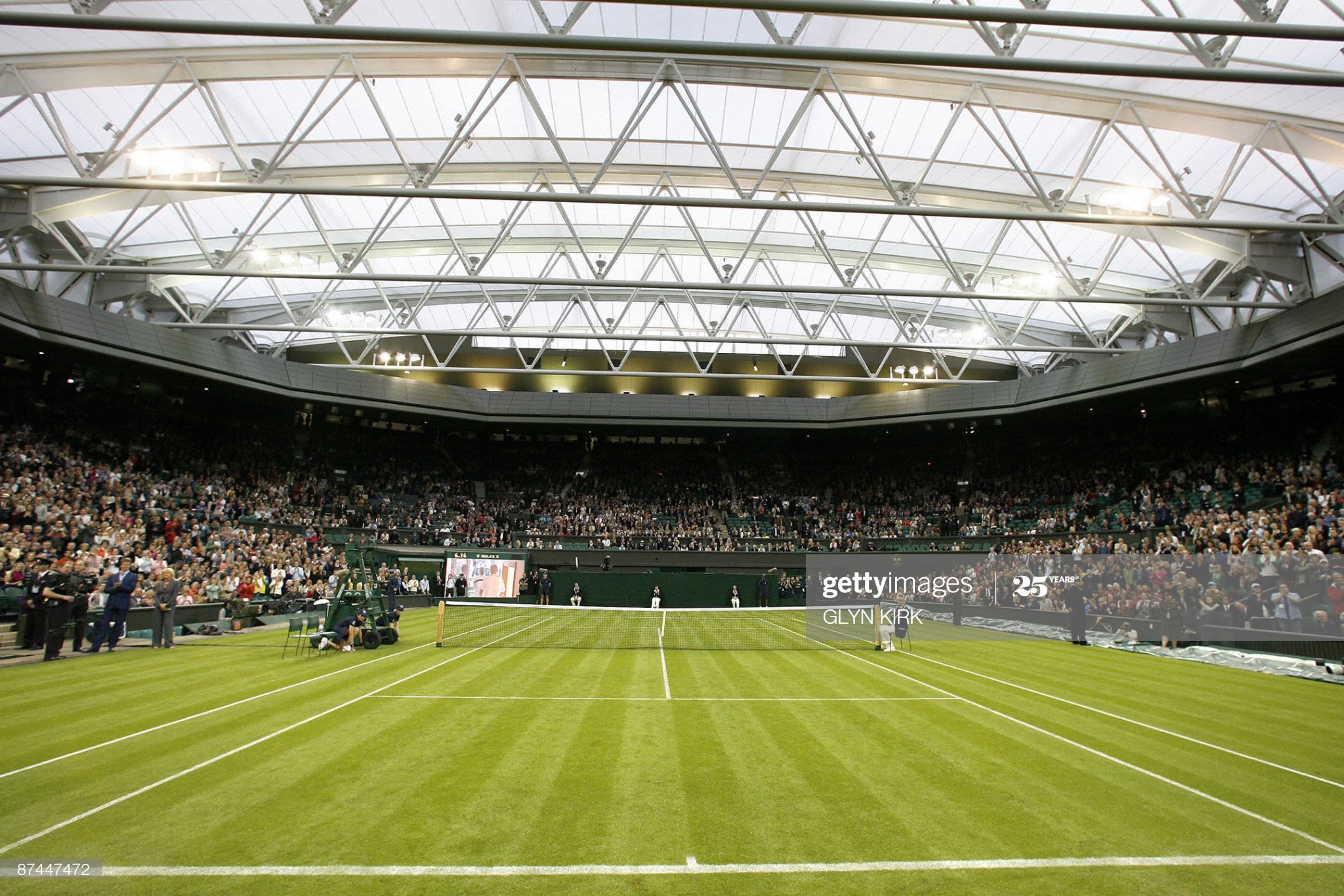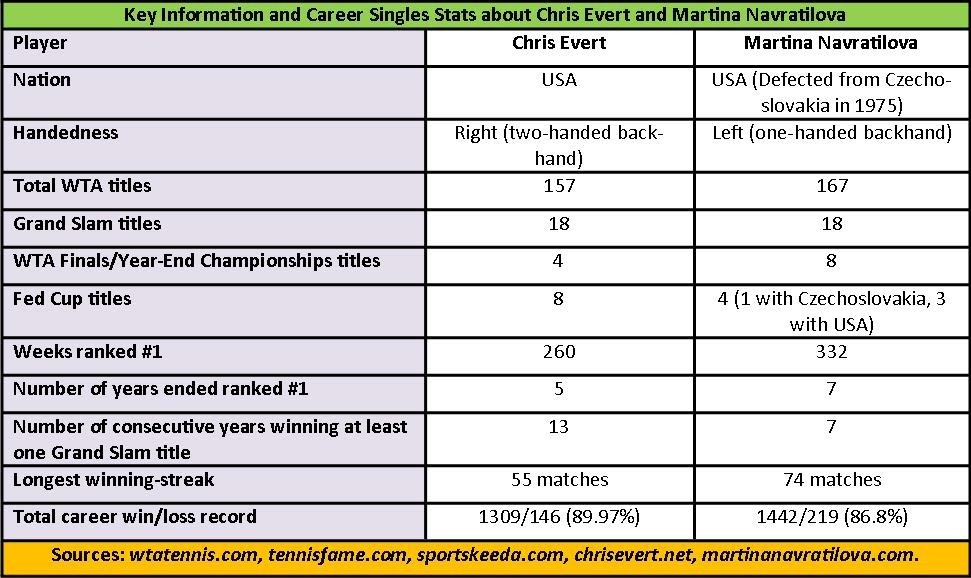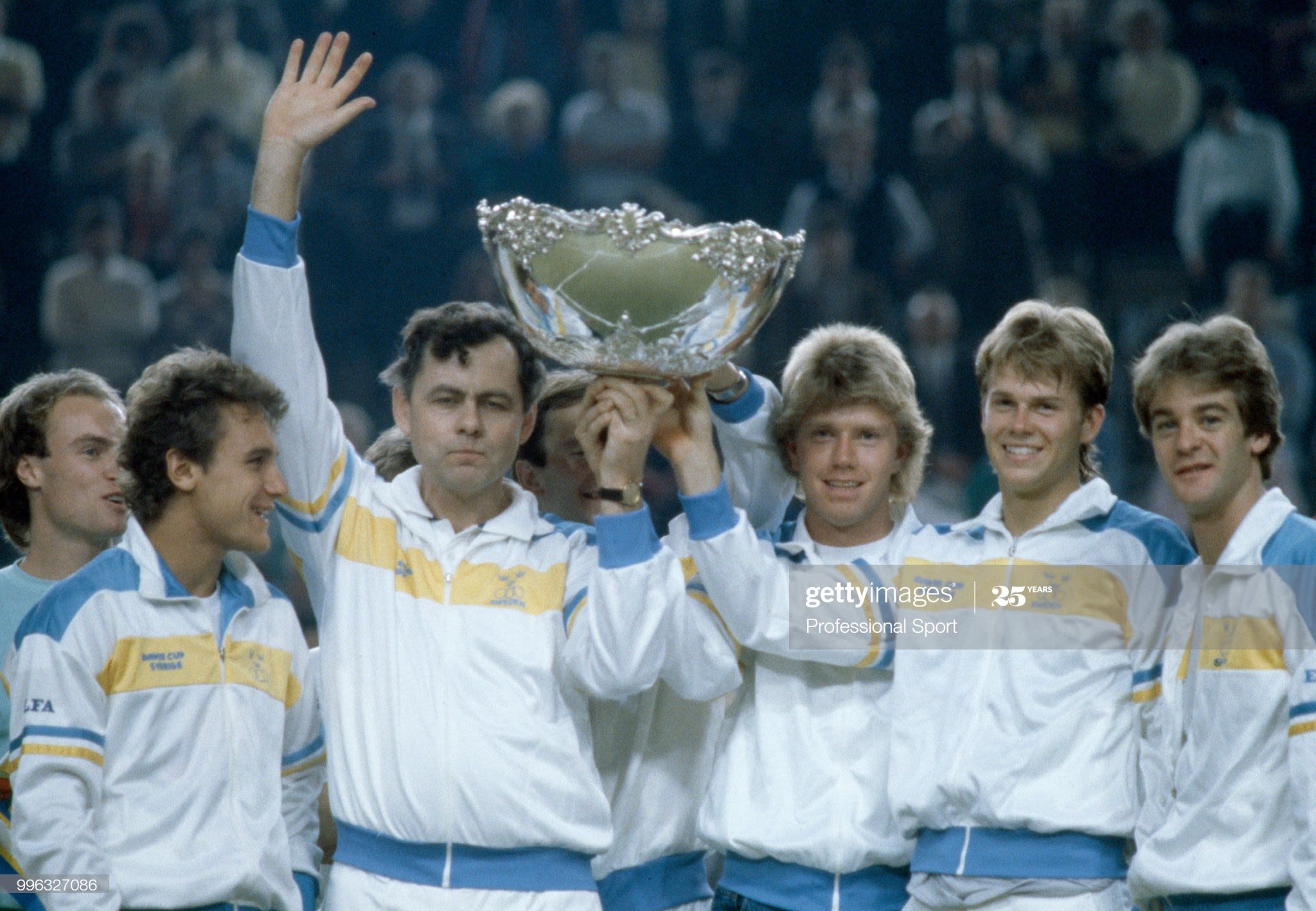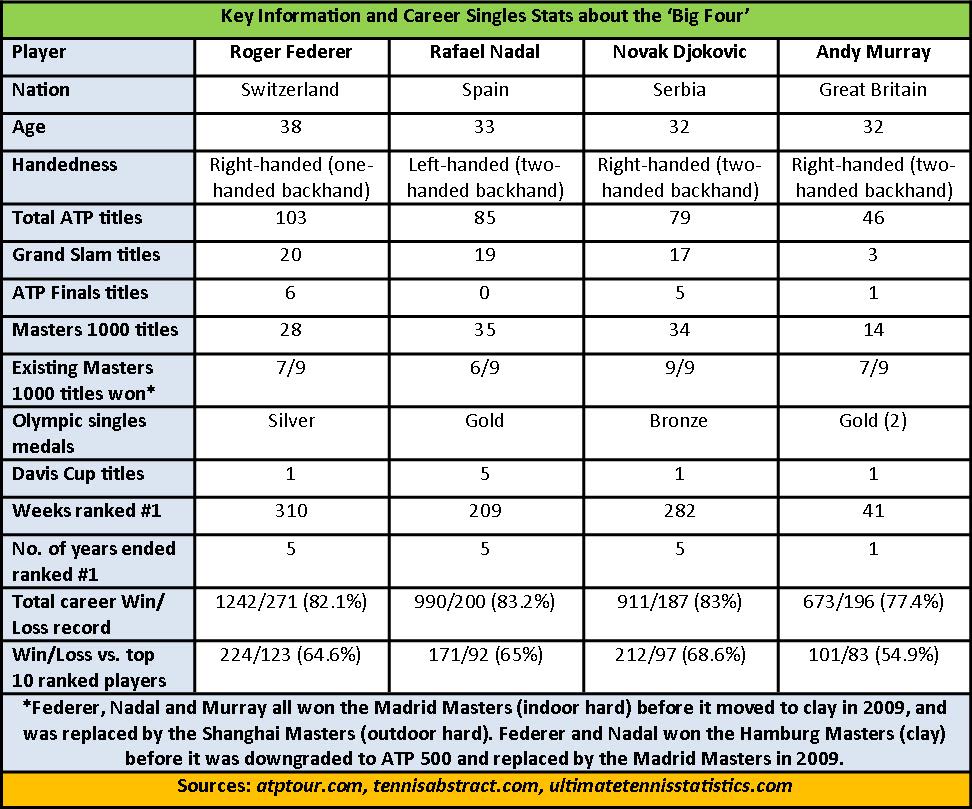The Baseline - Investigating Five of Tennis's Biggest Talking Points
Part 5 - The Greatest Eras

Part Five of The Baseline investigates the two periods considered to be the greatest of the Open Era of tennis.
What makes an era great? And does one era stand alone as the greatest?
“The Big Four era has produced the better players, but not the same indelible personalities. None have crossed over into the general public's consciousness the way Borg and McEnroe did,” says tennis writer Steve Tignor.
While it is difficult to compare different eras, the current ‘Big Four’ men’s generation, and the era of men’s and women’s tennis from the mid-1970s into the 1980s, are largely regarded as being the golden ages of Open Era tennis.
There is a range of reasons for these periods being so special - from level of tennis, to rivalries, achievements and the variety of characters.
The Open Era of tennis started in 1968 when professional and amateur players were both allowed to compete in Grand Slam events for the first time. Previously, only amateurs were able to play in Grand Slams, or other ILTF tournaments.
The 1968 British Hard Court Championships in Bournemouth, England was the first Open Era tournament. The first open Grand Slam event was the 1968 French Open. (Video by Wimbledon)
Tignor wrote “High Strung: Björn Borg, John McEnroe, and the Untold Story of Tennis’s Fiercest Rivalry” - which focuses on the period in men’s tennis from the mid-70s to the early 80s.
As well as Borg and McEnroe, the mid-70s to 80s period in the men’s game featured great players and personalities such as Jimmy Connors, Ilie Nastase, Vitas Gerulaitis, Guillermo Vilas, Ivan Lendl, and later - Boris Becker.
Tignor says: “Borg, McEnroe, Connors - along with Chris Evert - were bigger stars and celebrities than any tennis players before or since, with the possible exceptions of Roger Federer and Serena Williams.
“The sport had grown so much since it opened up in 1968, and these guys were the first generation of players to start out as full-fledged pros, chasing money all over the world. They were guinea pigs, and Borg and McEnroe both paid the price by burning out.
“That was the rock star era of tennis. Borg was the first player to be hounded by groupies like the Beatles, and McEnroe was often seen as the equivalent of the Rolling Stones. Unfortunately for Ivan Lendl, that makes him the Led Zeppelin in that analogy. Recreational drug use was also part of the lifestyle then.”
Joshua Shifrin, author of “101 Incredible Moments in Tennis”, expresses a view held by many tennis experts: “The best eras in tennis all revolve around great rivalries.”
The Borg-McEnroe rivalry, which spanned from 1978 to 1981, was at the heart of this era. Tignor describes the epic 1980 Wimbledon final - in which Borg beat McEnroe 1-6 7-5 6-3 6-7 (16-18) 8-6 – as “the first peak moment of the Open era.”
The 1980 Wimbledon Men's Singles final is considered to be the best match of the Borg-McEnroe rivalry - and one of the all-time great tennis matches. The incredible fourth set tiebreak is widely regarded as the greatest ever tiebreak. (Video by Wimbledon)
Tignor adds: “But 14 months later, it was all over when Borg retired at 25. Both of their stories have tragic elements: Borg was a figure of athletic perfection, who kept everything inside him - until he finally couldn't take it anymore and suddenly quit; McEnroe was a player who found a sort of tennis utopia in his rivalry with Borg, but who unwittingly destroyed it when he beat Borg and drove him out of the game.
“Borg and McEnroe finished 7-7, and I don't think any rivalry was so perfectly symmetrical - fire vs. ice, attacker vs. defender, artist vs. machine. In those ways, it's the quintessential tennis rivalry, and showcases two completely different ways of approaching the game, and life.
“The downside is that they didn't play more often. Evert vs. Navratilova, Laver vs. Rosewall, and the rivalries between Federer, Nadal, and Djokovic, all lasted longer and produced many more great matches. But none of those match-ups resonate quite like Borg vs. McEnroe.”
The rivalry between Chris Evert and Martina Navratilova also took place in the mid-70s-80s period and is regarded by some as, not only one of the best ever tennis rivalries, but one of the greatest in sporting history. The pair met a remarkable 80 times from 1973 to 1988 – with Navratilova holding a 43-37 edge.

A selection of the key statistics and achievements from Evert and Navratilova's legendary careers.
A selection of the key statistics and achievements from Evert and Navratilova's legendary careers.
Johnette Howard – award-winning writer and author of “The Rivals: Chris Evert vs Martina Navratilova, Their Epic Duels and Extraordinary Friendship” – says: “I think their rivalry was crucially important (to this era) because as good as the other rivalries were - McEnroe-Borg, Connors-Borg, Connors-McEnroe - none of them even came close to matching Evert-Navratilova for longevity, sustained drama, import, or cultural resonance.”
Howard believes the pair were able to remain friends because they were “the only two people on the tour then who truly knew what the other was going through, because they were so far separated from the other players once Martina hit her stride as a player.”
Another surprising aspect of the rivalry Howard uncovered was the stark contrast between assumptions made about Evert and Navratilova’s personalities and the reality.
Highlights from the 1984 US Open Women's Singles final, in which Navratilova defeated Evert 4-6 6-4 6-4 in one of the many classic encounters the rivalry produced. (Video by US Open Tennis Championships)
“Chris was always called the pretty one, the sweet girl next-door, American as apple pie. But she was by far the more remorseless competitor. She was simply unshakeably driven.
“She dated actors and rock stars and admits she spent a significant portion of her 20s “making up for lost time.” Martina was supposedly the tough one - the Communist outsider, lesbian Amazon, outspoken disrupter.
“By contrast, Navratilova was the sensitive one, fighting for acceptance, the loneliness of defecting (from Communist Czechoslovakia to the United States) at 18 and not being able to see her family for years. She absorbed society's scorn of the LGBTQ community and the fact that she was beating Chris, everyone's sweetheart, for a long stretch. Martina cries at the drop of a hat.”
This period in women’s tennis also featured the arrival of another all-time great, Steffi Graf. In 1988, Graf achieved the unprecedented feat of winning all four Grand Slam singles titles - and the singles gold medal at the Olympic Games - in the same year.

Graf, 19, at the 1988 Summer Olympics in Seoul, South Korea. The German won 22 Grand Slam singles titles and holds an 8-6 record against Evert, and a 9-9 record against Navratilova. (Photo by Leo Mason/Popperfoto/Getty Images)
Graf, 19, at the 1988 Summer Olympics in Seoul, South Korea. The German won 22 Grand Slam singles titles and holds an 8-6 record against Evert, and a 9-9 record against Navratilova. (Photo by Leo Mason/Popperfoto/Getty Images)
Ulf Roosvald, journalist and author of “Björn Borg and the Super-Swedes”, suggests the strength of Swedish men’s tennis – and particularly the presence of Borg – played a part in the mid-70s-80s being regarded as a ‘golden’ era. Borg won 11 Grand Slam singles titles, while Mats Wilander won seven, and Stefan Edberg won six.
“You could say that the success of Swedish tennis contributed to this being a great era. Borg, Wilander and Edberg were all ranked number one in the world. Also, the Davis Cup had higher status back then, and Sweden were successful in the Davis Cup in that period.

(L-R) Sweden's Mats Wilander, Hans Olsson (captain), Joakim Nystrom, Stefan Edberg and Anders Jarryd, celebrate winning the 1985 Davis Cup Final against West Germany in Munich. In the 1970-1989 period, Sweden also won the Davis Cup in 1975, 1984 and 1987, and were runners-up in 1983, 1986, 1988 and 1989. (Photo by Professional Sport/Getty Images)
(L-R) Sweden's Mats Wilander, Hans Olsson (captain), Joakim Nystrom, Stefan Edberg and Anders Jarryd, celebrate winning the 1985 Davis Cup Final against West Germany in Munich. In the 1970-1989 period, Sweden also won the Davis Cup in 1975, 1984 and 1987, and were runners-up in 1983, 1986, 1988 and 1989. (Photo by Professional Sport/Getty Images)
“Borg was so special - he had this drive and inner will to achieve something. He lived in this smaller town - Södertälje – and travelled to Stockholm on the train for about one and a half hours just to get to the court to practice. So, I think he would have become a star in any sport, or anywhere in the world.
“But, at the same time, there was a culture in Sweden where tennis was accessible for everyone. The state wanted to support the possibility for everyone to play sports.”
The current men’s age is labelled the ‘Big Four’ era due to the dominance of Roger Federer, Rafael Nadal, Novak Djokovic and Andy Murray. It started in the mid-2000s and - despite Murray struggling with injury since 2017 - is far from over. Federer, Nadal and Djokovic have won all of the last 13 Grand Slam titles between them.
Roosvald says: “I think we are experiencing, and have experienced in the last 10 to 15 years, the greatest tennis era - with the rivalries and record-breaking tennis of Federer, Nadal, Djokovic and Murray.

Federer, Nadal, Djokovic and Murray's incredible careers in numbers so far. (Correct as of April 30, 2020)
Federer, Nadal, Djokovic and Murray's incredible careers in numbers so far. (Correct as of April 30, 2020)
“McEnroe and Borg were so great, but if you look at their careers in numbers, they do not match with Federer, Nadal and Djokovic. Federer is still playing at 38. Both Borg and Wilander retired prematurely. They were just fed up with tennis - you would not see that today.”
Shifrin agrees that the current era of men’s tennis is the best ever, saying: “The Big Four is something we will likely never witness again. To see three or four men dominate for so long is truly amazing. They are all great ambassadors for the game as well.
“Watching contrasting styles compete can be exciting. I personally love the Evert-Navratilova, Borg-McEnroe and Sampras-Agassi eras – all three of those rivalries were baseliners vs. serve and volleyers. But, similar styles can be compelling as well. Some of the best matches I have ever seen have been Rafa and Novak fighting it out with some crazy baseline rallies.”
Highlights from the 2012 Australian Open Men's Singles Final, in which Djokovic beat Nadal 5-7 6-4 6-2 6-7 (5-7) 7-5. The brutal contest was the longest Grand Slam final in history - lasting five hours and 53 minutes - and is considered by many to be the greatest ever Australian Open final. (Video by Australian Open TV).
Shifrin adds on comparing eras: “It's really hard. I know people use Grand Slams won as a benchmark, but given that Rod Laver could have won many more had he not been a professional for years, or that players didn't even consider the Australian Open a huge deal for years - that might not be the best way to compare.
“And every generation gets better. Better equipment, better training, the players start getting serious about tennis at younger ages. I believe that the best way to compare eras is to evaluate the players within their cohort.”
Tignor gives his verdict: “I think of the Big Four era as tennis's Gilded Age. The top players make millions, travel with entourages, and exist in their own global stratosphere. They've learned how to handle the pressures of their jobs and all of the travel, in a way that Borg and McEnroe never did.
“The Big Four era has produced the better players, but not the same indelible personalities. None have crossed over into the general public's consciousness the way Borg and McEnroe did.”
Howard holds a similar view: “I think the presence of Federer, Nadal, Djokovic, and Murray, has been the best era of men's or women's tennis, period, as far as winning, performance, popularity, number of titles, and longevity.
The 2008 Wimbledon Men's Singles final, in which Nadal beat Federer 6-4 6-4 6-7 (5-7) 6-7 (8-10) 9-7, was described by John McEnroe as the greatest match he had ever seen. (Video by Wimbledon)
“It's a close call between eras because, to me, a great Nadal-Federer final is as good as any sports showdown ever. But for the totality of the experience, I'd pick the 70s/80s crew of men and women for best rivalries.
“They spoke their mind more back then. They were unafraid what some sponsors might think. Today's players aren't like that despite being insulated by so much more wealth.”
The Baseline has investigated and provided insight into five of tennis’s biggest talking points.
Here are the other four parts of the series:
Part One - The Team Event Landscape
